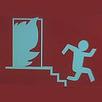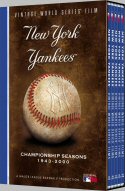|
Larry Mahnken and SG's | ||
|
| Replacement Level Yankees Weblog |

|
|
"Hey, it's free!" | ||
|
Larry Mahnken and SG's | ||
|
| Replacement Level Yankees Weblog |

|
|
"Hey, it's free!" | ||
|
Featuring: Larry Mahnken SG sjohnny TVerik Sean McNally Fabian McNally John Brattain  
The New York Yankees Vintage World Series Films DVD Set, available from A&E. Yankees Tickets World Series Tickets MLB All Star Tickets NFL Tickets Purchase your Onlineseats.com is your #1 source for MLB tickets, NY Mets Tickets, Cubs Tickets, Yankees Tickets, Red Sox Tickets, Giants Tickets, Astros Tickets, Angels Tickets, Phillies Tickets.
Buy all your MLB Tickets,
Laser Keyboard Brazil Flowers TickCo.com for premium New York Yankees Tickets Boston Red Sox Tickets Chicago white Sox Tickets A's Tickets Angels Tickets New York Mets Tickets St Louis Cardinals Tickets Cubs Tickets Dodgers Tickets Worldticketshop Football Tickets Concert Tickets Tennis Tickets Rugby Tickets Formula 1 Tickets "I'm not a pessimist, I'm an optimist. Things are really worse than I say they are." - Steve South

04/01/2003 - 04/30/2003 05/01/2003 - 05/31/2003 06/01/2003 - 06/30/2003 07/01/2003 - 07/31/2003 08/01/2003 - 08/31/2003 09/01/2003 - 09/30/2003 10/01/2003 - 10/31/2003 11/01/2003 - 11/30/2003 12/01/2003 - 12/31/2003 01/01/2004 - 01/31/2004 02/01/2004 - 02/29/2004 03/01/2004 - 03/31/2004 04/01/2004 - 04/30/2004 05/01/2004 - 05/31/2004 06/01/2004 - 06/30/2004 07/01/2004 - 07/31/2004 08/01/2004 - 08/31/2004 09/01/2004 - 09/30/2004 10/01/2004 - 10/31/2004 11/01/2004 - 11/30/2004 12/01/2004 - 12/31/2004 01/01/2005 - 01/31/2005 02/01/2005 - 02/28/2005 03/01/2005 - 03/31/2005 04/01/2005 - 04/30/2005 05/01/2005 - 05/31/2005 06/01/2005 - 06/30/2005 07/01/2005 - 07/31/2005 08/01/2005 - 08/31/2005 09/01/2005 - 09/30/2005 10/01/2005 - 10/31/2005 11/01/2005 - 11/30/2005 12/01/2005 - 12/31/2005 01/01/2006 - 01/31/2006 02/01/2006 - 02/28/2006 03/01/2006 - 03/31/2006 04/01/2006 - 04/30/2006 05/01/2006 - 05/31/2006 06/01/2006 - 06/30/2006 07/01/2006 - 07/31/2006 08/01/2006 - 08/31/2006 09/01/2006 - 09/30/2006 10/01/2006 - 10/31/2006 LINKS Yankees Sites and Columnists Nomaas.org General Baseball Sites & Columnists Rotoauthority.com The Book Blog - Playing the Percentages in Baseball(Tango, MGL, Dolphin) Yankees Blogs Almost Perfect Baby Bombers Baseball Mania Bronx Banter Dugout News Eephus Pitch Fire Joe Torre Blog Here Comes Number 27 High and Tight Lohud Yankees Blog No Sense Worrying Soft Hands The Sporting Brews The Stat Boy of the Empire Was Watching Yankees Chick Yankees Fans in Foreign Lands Yanks Blog Look what people have to say about Larry Mahnken's commentary! "Larry, can you be any more of a Yankee apologist?.... Just look past your Yankee myopia and try some objectivity." "Mr. Mahnken is enlightened."
"Wow, Larry. You've produced 25% of the comments on this thread and
said nothing meaningful. That's impressive, even for you."
"After reading all your postings and daily weblog...I believe you have truly become the Phil Pepe of this generation. Now this is not necessarily a good thing."
"you blog sucks, it reeds as it was written by the queer son of mike lupica and roids clemens. i could write a better column by letting a monkey fuk a typewriter. i dont need no 181 million dollar team to write a blog fukkk the spankeees"
"i think his followers have a different sexual preference than most men"
"Boring and predictable."
"Are you the biggest idiot ever?"
"I'm not qualified to write for online media, let alone mainstream
media."
This site is best viewed with a monitor.
|
Disclaimer: If you think this is the official website of the New York Yankees, you're an idiot. Go away. Friday, March 31, 2006
The Defense of the 1996-2001 Yankees by SG
In my earlier post about the 2005 Yankees and their horrific defense, rsmith51 asked about how the 1996-2001 Yankees would fare. With a little digging at ESPN's site, I was able to find Zone Rating back through 1996, so I gave it a shot.
Thursday, March 30, 2006
Getting Closer by SG
With Randy Johnson pitching in a minor league game yesterday for his final pre-season tuneup, the regular season is drawing near.
Tuesday, March 28, 2006
The Best Defense is a Good Offense by SG
If the Yankees hope to make any noise in the postseason this year, they'd better hope that this title holds true and they can hit their way through, because their defense has been bad recently, and doesn't look to be much better in 2006.
Monday, March 27, 2006
Ouch. My Wang by SG
Chien-Ming Wang took a ball off his shin/knee yesterday, and it may cause him to miss his next start. Amazingly, the Yankees could start the season with Jaret Wright in the starting rotation.
Friday, March 24, 2006
I Believe by Larry Mahnken
As of about, oh, 5:30 PM (Eastern Time) on March 24th, 2006, these things I believe, in no particular order:
by SG
The Yankees beat the Astros 8-1 last night.
Thursday, March 23, 2006
Can the 2006 Yankees score 1000 runs? by SG
The addition of Johnny Damon has "experts" everywhere predicting that the Yankees may score 1000 runs this year. While the talent may be on hand to actually do it, based on the 3000 seasons I ran in Diamond Mind, the odds of it actually happening are about .4% (it happened in 13 out of 3000 runs). So what would it take for the Yankees to score 1000? Here are the sample stats for a season where the Yankees scored 1007.
Wednesday, March 22, 2006
Random Stuff by SG
After all the numbers I've been throwing out for the last few weeks, I think it's time to step back and just read some puff pieces. Here's what in the news out of Yankee camp right now.
Monday, March 20, 2006
The 2006 Diamond Mind Projection Blowout by SG
Last year, I ran 2000 Diamond Mind Simulations with Diamond Mind Baseball and projection disks by Diamond Mind and ZiPS. This year, I've done it again, and also added another 1000 runs using Baseball Prospectus's PECOTA projections.
Sunday, March 19, 2006
Looking Ahead to 2006 - Dotel, Sturtze, and the rest by SG
So far in the pitching projections, I've accounted for 965 innings from the starters, and another 265 innings from the relievers, which is a total of 1230 innings. The remaining innings, about 200, will hopefully be primarily split between Tanyon Sturtze and Octavio Dotel.
Thursday, March 16, 2006
Looking Ahead to 2006 - The Lefty Relievers by SG
Wayne Franklin. Wayne Freakin' Franklin. The mere thought of his name conjures up the memories of perhaps Joe Torre's worst decision of last season, where he brough in Franklin to blow a 1-0 lead in a 2-1 loss in Texas.
Wednesday, March 15, 2006
Looking Ahead to 2006 - Kyle Farnsworth by SG
After two superlative years as Mariano Rivera's setup man, Tom Gordon has moved on to Philadelphia to close. Despite his problems in the postseason, Gordon was a huge asset for the Yankees in 2004 and 2005. It's interesting to compare Gordon and another setup man the Yankees had signed a few years back.
Tuesday, March 14, 2006
Looking Ahead to 2006 - Mariano Rivera by SG
More than any other player on the Yankees since 1995, Mariano Rivera has been the face of the Yankees' recent success. Despite his advancing age, Rivera turned in perhaps his best season since 1996, setting a career best with an ERA+ of 323 and holding opposing hitters to a line of .177/.235/.230.
Saturday, March 11, 2006
Looking Ahead to 2006 - Santana, Halladay, Wright, Small by SG
Two of these guys will be contending for the AL Cy Young this year. Two will not. I'll leave it to you as the readers to discern which are which.
Friday, March 10, 2006
Looking Ahead to 2006 - Carl Pavano by SG
For the bargain price of $9,000,000, the Yankees got 100 innings of below average pitching from Carl Pavano in 2005. The man that nomaas.org has taken to calling Glass Carl due to his litany of injuries is already behind schedule this year, and not likely to break camp with the team. The cautionary tale of J.R. Richard should give pause to anyone who wants to question a player and their injuries, so that is not something that I feel comfortable doing.
Thursday, March 09, 2006
Looking Ahead to 2006 - Shawn Chacon by SG
Much like Chien-Ming Wang, Shawn Chacon came out of nowhere(in a figurative sense) to play a key role in the Yankees making the playoffs. Chacon was acquired from the Colorado Rockies on July 28, for minor league relievers Ramon Ramirez and Eduardo Sierra. He came over with a 2-16 record in his last 18 decisions over 2004 and 2005, although he carried a respectable 4.09 ERA for a Colorado pitcher when the Yankees got him.
Wednesday, March 08, 2006
Looking Ahead to 2006 - Chien-Ming Wang by SG
From the depths of allegedly the worst farm system in the history of organized baseball, emerged a Taiwanese flame-thrower who did not strike anyone out. Somehow, despite this inability to whiff batters, and playing in front of a defensively challenged infield, Chien-Ming Wang managed to pitch 116 innings to an ERA of just 4.02, and helped the Yankees rebound from an 11-19 start to win the AL East.
Tuesday, March 07, 2006
Looking Ahead to 2006 - Mike Mussina by SG
It's hard to believe it's been five seasons since Mike Mussina came to the Yankees. Five seasons without a world title, although that is hardly Moose's fault.
Monday, March 06, 2006
ESPN: Kirby Puckett, 44, dies day after suffering stroke by SG
I know this is a Yankee site, but this news hit me hard. Puckett was one of the faces of baseball while I was growing up. Many of you are probably too young to have watched him, but he was an enjoyable and entertaining player to watch, and was the man who coined the "Donnie Baseball" nickname.
Sunday, March 05, 2006
Looking Ahead to 2006 - Randy Johnson by SG
The Yankees' rotation is going to be the key to this season, as far as I'm concerned. Every single starter hasreasonable question marks due to age, health, and other factors. While the Yankees do have starting pitching depth in Jaret Wright, Aaron Small, and Ron Villone, it's not good depth.
Friday, March 03, 2006
Looking Ahead to 2006 - Right Field by SG
He's controversial. He's outspoken. He's tended to wear out his welcome in every town he's played in. Despite being a Hall of Fame quality hitter, the Yankees are Gary Sheffield's sixth team. At age 36, Sheffield put up another solid offensive season, with a line of .291/.379/.512, with 34 HRs and driving in 123 runs. The big story so far in spring training has been his 2007 option, and whether or not the Yankees will pick it up. I tend to think most of this story has been embellished by a bored media and don't really care about it.
Thursday, March 02, 2006
Looking Ahead to 2006 - Center Field by SG
All off-season, I tried to tell myself that the Yankees would not be stupid and sign Johnny Damon. A lot of this was based on his original demands for a seven year contract, but most of it was just an emotional response to one of the key faces of the Red Sox coming to the Yankees.
Wednesday, March 01, 2006
Looking Ahead to 2006 - Left Field by SG
Hideki Matsui is a good player who's overpaid. There's certainly the argument that he increases the Yankees' international exposure which makes him worth it, but his performance on the field, while solid, is hurt by poor defense. Based on feedback, I've decided to fight my inherent laziness and not just use last year's defensive numbers any more, but to try and project what can be expected going forward.
| |||||||||